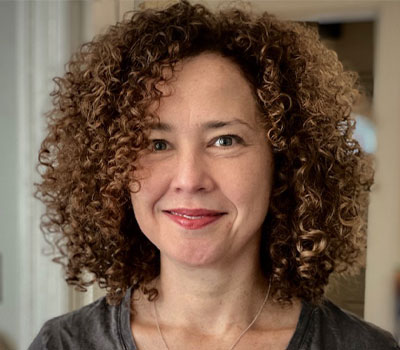Rebecca Banks has worked with Keith McNally as beverage director for his restaurants since 2005, with Balthazar as the lead focus. The SoHo bistro has a wine team of three, including Banks; her long-time colleague Caroline Morosanu as wine and spirits manager, who also makes buying decisions as well as handling purchasing; and Vinnie DaSilva, the new cellarmaster, handling inventory and also helping with wine-list training. Since there is no sommelier on the floor, training the staff is a priority for the wine team. “We’ve been doing even more staff education than before,” Banks reports. “We had a lot of new people come on when we reopened. A lot of them hadn’t worked in fine dining, or weren’t familiar with French wine, or weren’t wine drinkers. I brought in distributors, and we did a Bordeaux class, a specialized Burgundy class, a Champagne class. Some of the new people ended up being our best sales people, because they realized a bottle of wine would raise their check average.” —Joshua Greene


How has pandemic dining changed your buying strategies?
When we reopened in March 2021, I wasn’t buying anything unless I was reordering. We had all these leftover wines, and I was having fun putting random Languedoc blends on by the glass, or Touraine wines, things that hadn’t been selling by the bottle. We were seeing what would move, and that gave me hope that we could put more interesting things on by the glass if we educate the staff about them.
The pandemic has made me more conservative in terms of only taking what I can move. I’ll take my allocations; I won’t give up my allocation of DRC. But generally, I’ve been hesitant to take big drops on things unless I really know the wines will move. We have to keep our budget in line. Having shut down once before, there’s this feeling of ‘What’s going to happen? What’s going to happen?’ Now, we’re over 100 percent capacity because we have the outdoor dining. We’re in a rhythm again. We didn’t know how each phase was going to play out so, I was very hesitant and conservative until we got past the holidays. Now, looking into the spring, it’s just going to get busier, I’m feeling more optimistic, and that is definitely reflected in our buying. I’ve started buying with the bigger picture in mind, buying for more than the week.
Speaking of DRC, we’re heard from a number of restaurants that they are not selling a lot of volume of any one wine, but they are selling some very expensive bottles, which then appear on their top selling list due to their four-digit pricing. Are you seeing more interest in rare, top-flight Burgundy?
We do sell volumes of wine—we did 800 covers for brunch yesterday. We’re packed right now; the numbers are insane. But I am seeing a lot more of these unicorn bottles going out. I’ll look at reports and say, ‘Oh, wow, we sold that. And we sold that.’ I am seeing more of a variety of things selling at those higher price points—some Rousseau, some Dujac, Coche-Dury and definitely high-end Bordeaux. I picked up some Pétrus recently, and I never buy Pétrus. I had DRC at really good prices, and it made my Bordeaux list look like a bargain basement—in terms of prices, even Lafite doesn’t look like anything compared to La Tâche. So, I peppered the list with Cheval Blanc, I took on a couple large-format bottles. There are some three-liters of Rauzan-Segla (those are $1200, not in the same range), and some older Cos d’Estournel.
We’re having people come in and say, ”Do you have anything more expensive?“ They just want to spend money. The same thing is happening at the bar. People have asked, ”You don’t have a more expensive Cognac?” Well, there’s nothing more expensive than Louis XIII. Or maybe we’re not charging enough for Pappy van Winkle. They ask, ”Do you have a secret wine list?“ We do have a hand-sell list we do for special bottles, and more people are asking about that—maybe once every two weeks. Not a lot. People are coming in, and they want to be treated special; they want something secret. They have the money; they want to spend the money; they want to drink well.
A lot of people who came back after the pandemic, it seemed like they had done their research. Before the pandemic, we were 50-50 between regional New York locals and tourists. The European tourists didn’t come back until November so, at first, it was a lot of New Yorkers. Over the holidays, there were a lot of overseas tourists coming in, and it definitely got busier. Now, we’re seeing it more like before, still with a lot more local New Yorkers. They drink like New Yorkers. Nobody seems shocked by the prices. We’ve been selling a lot of wines for $250; that seems to be where people want to spend at the reserve level.
In the fourth quarter of 2018 your top-selling wine was a $75 Sancerre. In 2019, you listed a Bordeaux Supérieur for $68. In 2020, a St-Emilion Grand Crus for $98 (with Sancerre falling to fifth place) and in 2021, a Sancerre at $84…and a Côte de Provence Rosé at #2. There were two Côte de Provence Rosés on your top-selling list this year, and none in the three previous years.
I attribute that to the outdoor space. Over the spring into summer and fall, it was like a party every day. If they weren’t drinking Aperol spritzes, they were drinking rosé. Our liquor sales doubled; our wine sales went up incrementally because we have about 100 seats outside (300 inside). For people sitting outside, there was that open air feeling, and rosé fits. We reopened in March, almost a year to the day after we closed. At that point it was 30 percent capacity. It went to 50 percent pretty quickly. We went to full capacity when everyone else did, when we were allowed.
You mentioned an increased interest in Chablis. Where do you see that and what do you think is driving it?
Chablis used to be a bad word. We were selling a lot before—it’s the first category under Burgundy, and you can get a premier cru Chablis for $110. The least expensive is $75, one of the more affordable white wines. It’s light and crisp, refreshing white wine—and the servers recommend it.
It’s funny, it didn’t use to be a category that people responded to. It’s become almost like Sancerre, it doesn’t sell at the same rate, but people are saying, “I’ll have a Chablis,” or “I’ll have a Sancerre.” When I list Petit Chablis, around $65 or $68, that really moves. And that make me laugh. There was a time Petit Chablis was considered plonk; it was from the worst vineyards; it was underripe. It’s not underripe anymore. It’s delicious. The same thing is happening with aligoté; it’s also fresh and crisp. It’s nice to see these wines moving.
I’m planning now for what I’ll be able to put on by the glass next year, when there is no Sancerre or there is no Chablis, because of the 2021 vintage. I’m hearing that this producer made nothing, this producer made 20 percent of what they normally would make. So, I’m trying to think ahead. Will people drink Savoie? I love it, but will they just choose to pay more for the wines they know. What is the threshold? They already pay more for Sancerre; I’ve seen it firsthand. We used to get it for $9 a bottle and sell it for $13 a glass. It’s gone up incrementally over the years. It’s getting to the point where you have to wonder how much over $20 can you charge for a glass before someone isn’t seeing the value in that. When the bottle cost creeps up to $20 for entry-level Sancerre, it becomes a challenge. It’s a game of Tetris; you can make it up with something else. My goal is to have wines that are representative of where they’re grown, so I have to offer a variety of prices and styles, within reason. I secretly love that part of my job. I wish it were my only job. We’re lucky in New York, we have so much at our disposal.
We buy pallets of Sancerre, 50 cases at a time, and then we are going to move on to the next vintage, and that will be short, and then the next vintage, there’s nothing there. Sancerre, Chablis, Bourgogne Rouge, when we get down to the last 75 cases, we need to consider where we will go. We’re not sure. We’re in discussion. The producer has a fraction of what they normally have. If we stockpile enough, maybe we can swing by. We’ll see.
Have you implemented any programs or special promotions to try to increase wine sales?
One big thing we did over the summer—more as a way to move some overstock of liquor and 2018 rosé—we did a frosé, which we’ve never done before. Well, we did it at Schiller’s once. At Balthazar, we did this bespoke frosé that our pastry chef made in our ice-cream maker. And we sold $55,000 worth of frosé. It was French rosé, a little Chartreuse, a little strawberry purée, a little strawberry liqueur. We sold 3,200 frosés until we took it off the menu in September. It was so good, and maybe a little lethal.
We’ve also developed some new incentives. We do daily competitions—if you sell 50 bottles at lunch, you get a bottle at a discount, or if you sell 70 bottles at dinner. We’ve always done that, but we had to introduce it again. Or the three people who sell the most during lunch and then a different competition at dinner.
We did an incentive with a Champagne brand, but no one person was motivated to sell any more. That doesn’t work for us because the servers have so many things to remember, and they are trying to read the table and figure out what the guests want. They are psychiatrists, trying to read the table, so brand promotions don’t work, but dollar amounts always seem to work.
What is the craziest thing that has happened in your wine program or at your restaurant this past year?
Nothing really crazy. I try to be no drama. There’s been so much movement in the trade, I don’t know who’s working where or selling what. Sales people at distributors are moving around a lot. For the most part, everyone has been great to work with, but there is a disconnect sometimes between what we as buyers need and what distributors are pushing. No, I can’t buy that. No, I can’t buy that, either. The push was coming from the top down. I have friends who work at distributors, and they were saying most people won’t even pick up the phone.
Joshua Greene is the editor and publisher of Wine & Spirits magazine.
This is a W&S web exclusive. Get access to all of our feature stories by signing up today.




















